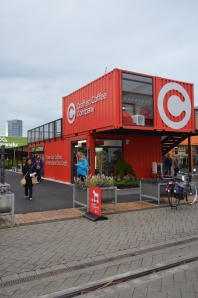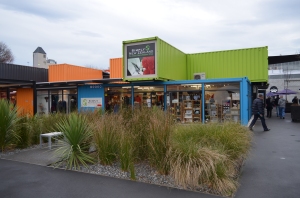
Hey, Bicycle Bill
In 1971, while the anti-highway movement was gathering real pace, another watershed moment for bicycle and pedestrian transportation took place. Led by another Republican legislator Don Stathos, Governor McCall backed the passage of Oregon House Bill 1700, commonly known as the “Bicycle Bill”. This legislation required cities in Oregon to spend a minimum of 1% of funds received from the Oregon State Highway Fund on bicycle and pedestrian infrastructure when constructing, repairing or relocating a road.
The Bill led to the creation of the present day Oregon Bicycle and Pedestrian Advisory Committee, a governor appointed committee that advise the Oregon DOT. Subsequently, the development of Portland’s first Bicycle Plan in 1973 by a residents task force, and the Portland Office of Transportation’s Bicycle Program, put active transportation firmly on the City of Portland’s agenda.
However, it would be another 20 years before the Bill’s provisions would be implemented in earnest. Unfortunately, as city and state leadership changed in subsequent years, the necessary political will to enforce the Bill dwindled and it’s numerous exemptions and ambiguities were often exploited. While a primitive bicycle network did emerge across the city, it fell some way short of the ambitious 190 miles of bikeways which the 1973 Bicycle Plan called for. In fact, by 1992 just 83 miles of bikeways existed in the city.
Despite the Reagan era of cheap gas prices and increased car ownership, Portland did experience modest growth in bicycle numbers between the mid 1970’s and early 1990’s. According to PDXcityclub.org, between 1975 and 1992, the number of bicycle riders crossing the Hawthorne Bridge increased from 200 to 1,400 per day.
The Continuing Story of of Bicycle Bill
Well organized grassroots activist and advocacy groups have been a feature of the sustainable transportation agenda in Oregon (see pt. 1). However, the formation of the Bicycle Transport Alliance in 1990 would prove to be another watershed moment for the bicycle movement in the city. Frustrated with how the City ignored the needs of it’s bicyclists, the BTA brought together disparate activists and passionate bicyclists. Founded by Rex Burkholder (amongst others) they had early success persuading TriMet, (the region’s transit provider), to install bike racks on all it’s buses. The BTA were just getting started.
From it’s foundation the BTA recognized the unfulfilled potential of the Stathos’ Bicycle Bill. They repeatedly challenged city and state leadership on the issue, arguing the need and demand for safe bicycle facilities on the city’s main streets, as well as the willful neglect of the Bicycle Bill’s legislation. But Transportation Commissioner Earl Blumenauer and Portland’s Mayor Vera Katz refused to offer any serious support. It became clear to Burkholder that the only way to resolve conflicting interpretations of the Bill would be to take it to the courts. The multi-million dollar proposal for the construction of the Rose Bowl Stadium in downtown Portland provided the perfect opportunity for the BTA to make its case.
The project entailed $34 million of public funds to reconstruct roads and improve accessibility to the facility. Again, the BTA demanded pedestrian and bicycle facilities to be included and again, the City offered only token gestures. The BTA vs. the City of Portland ensued. It took 10 volunteer lawyers two years to convince the court (and appeals court) that state and local governments must provide bicycle and pedestrian facilities as part of all road projects – as Don Stathos had intended way back in 1971. In a landmark decision, the judge ruled in favor of the BTA.
Finally the Bicycle Bill had gotten some serious legal teeth and the BTA major clout in regional transportation circles. The BTA has since grown into a 5,000+ strong member organization, and Burkholder has since been elected to the Metro Council and formerly served as Chair of the region’s Joint Policy Advisory Committee on Transportation. Importantly, the BTA also won over the support of Blumenauer, who would oversee a wave of bicycle facility construction and the start of Portland’s bicycle renaissance.
Build it and they will come…. Bicycling in Portland.
Blumenauer hired a young woman named Mia Birk to manage the City’s Bike Program, giving her a strong mandate and his political support. Birk embarked upon a major program to engage cyclists and potential cyclists in a dialogue about ways to increase ridership. Working with activists, advocacy groups and communities, she set about designing bottom-up policy which identified and resolved bicyclists needs and concerns.
Overwhelmingly, improvements to the city’s bridges and supporting road networks were identified as the key infrastructure requirements. Providing bicyclists with safe connections between the city’s pedestrian and bicycle-friendly neighborhoods and emerging business districts on the east side of the Willamette River with its amenity rich downtown on the west side would be critical. The City adopted a “build it and they will come” approach by investing in improved bridge facility quality and access.
Daily bicycle trips over the critical Hawthorne and Broadway bridges increased steadily as infrastructure improvements took effect. Sidewalks were widened, separated bike lanes were built over bridges and their approaches, and conflict zones were marked. Most importantly, bicyclist numbers grew. In fact, by 1995 Portland was named the most bicycle friendly city in the US by Bicycling Magazine – who recognized the extent of the City’s efforts.
In the short time between of the BTA’s Bicycle Bill victory in 1992 and the release of the Portland Bike Plan in 1996, the city had added over 50 miles of bikeways in some of the most strategically important areas. It had developed bike lanes, bike boulevards, and off street paths, over 1,400 public bicycle racks were installed, and Bike Central stations were built providing showers, changing facilities, and long-term bicycle storage. Bicycle transportation was gaining momentum quickly, and more was to come.
The Bicycle Master Plan 1996
After a two and half year preparation, including rigorous public consultation, the Bicycle Master Plan was released in 1996. Aiming to making the bicycle an integral part of daily life in Portland, it called for approximately 445 miles to be added to the existing system to create an ambitious 630 mile network of bikeways throughout the city over the next 20 years.
This network would safely facilitate bicycling to commercial districts, employment centers, transit stations, and recreational destinations. Citywide parking facilities and end of trip facilities would be improved, as would bicycle to transit links. Education and promotion of the benefits of cycling would be prioritized, and importantly best practice design and engineering guidelines were provided. Portland borrowed heavily from Dutch and Danish tradition, New Urbanist ideas and from bicycle friendly college towns such as Davis, CA. Road diets were implemented on 4-lane roads with excess capacity, and safe, separated lanes were introduced where traffic moved at dangerous speeds. In addition, Bike Boulevards were introduced to traffic calmed residential areas, providing quick thoroughfares for bicyclists.
By the time Birk left her position in 1999, Portland had well in excess of 200 miles of bikeways and a rapidly increasing modal share. Although the 1996 plan has so far fallen short of its objective in terms of bikeway construction, the city has experienced an impressive rise in bike ridership. Between 1996 and 2010 (when the plan was revised) Portland extended its bikeway network to 300 miles – a gain of approximately 115 miles.
Portland experienced a 65% increase in cycling numbers between 1990 to 2010. According to the Census Bureau’s annual American Community Survey, between 1990 and 2008, the number of bicycle commuters in Portland rose by approximately 5% – from 1.2% to 6.0%. The rise was undoubtedly helped by a surge in gas prices over the same period, but compared to other West coast cities, Portland’s gains are impressive.
How much?
However, equally impressive is how little building a city wide bicycle infrastructure has cost the taxpayer. According to Birk, Portland has, for the cost of one mile of freeway – about $50 million – built its entire bikeways network.
Under the auspice of pro-bicycle Mayor Charlie Hales and current Bicycle Coordinator Roger Geller, rising bicycle numbers and cost efficient infrastructure investment looks set to continue. The 2030 Bicycle Plan, adopted in 2010, doesn’t shy away from of its predecessors ambitions, calling for the network of planned bikeways to be increased from 630 to 960 miles. It aims for a modal share of 25%, and to compete with the top European bicycling cities.
While Portland still has a long way to go in terms of becoming a bicycle city in global terms, in the mean time Portland residents can enjoy less congestion, improved air quality, and a healthier, more livable city….and the title of America’s Bicycle Capital.
Some other things to consider..
- While most American cities have seen their residents drive farther and spend more time in traffic – Portland’s vehicles miles travelled per person peaked in the mid- 1990’s.
- Compared to other large cities, Portlanders on average drive 20% less – which produces annual savings on cars and gasoline expenses of $1.1 billion – which in turn, has a huge multiplier effect on the regional economy (at least 73% of money spent on gasoline would be exported).
- In 2006, the City commissioned a study that estimated that bike-related businesses were generating $63 million a year – a sign of the industry’s increasing importance. More recently, The Oregonian has reported estimates that recreational bicycle travel accounts for $400 million of Oregon’s annual $9 billion tourism industry.
- Mia Birk is now the president of Alta Planning and Design and is still heavily involved in improving sustainable transportation in Portland. It’s sister company, Alta Bike Share, designs and manages bicycle share systems. It has brought bike shares to Chicago, San Francisco, Washington D.C. and Melbourne. In 2014 Alta plans to launch a bike share in Portland.





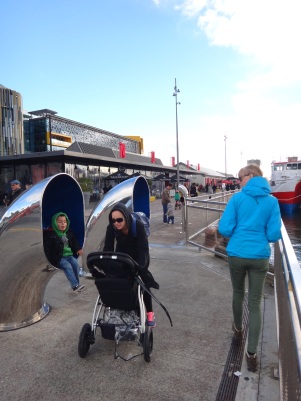
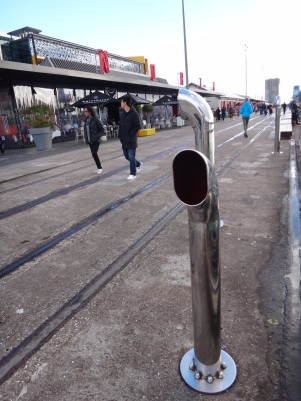


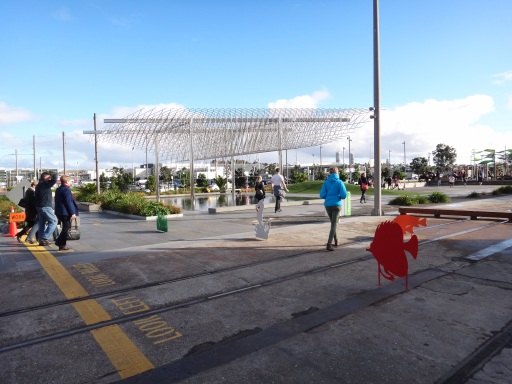







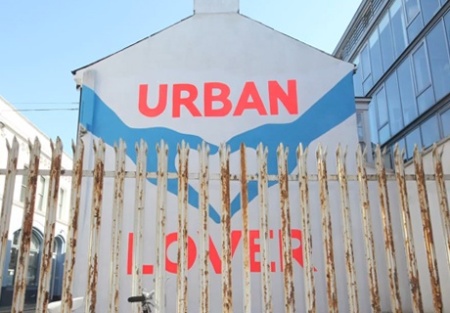

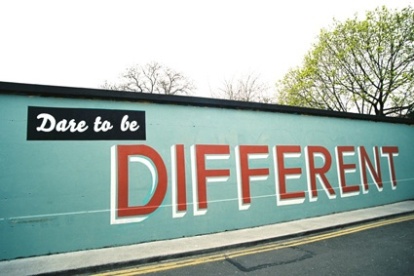




 The project became seen as a first step in the city’s rebuild, seeking to re-establish business and retail around the Cashel Street
The project became seen as a first step in the city’s rebuild, seeking to re-establish business and retail around the Cashel Street 

